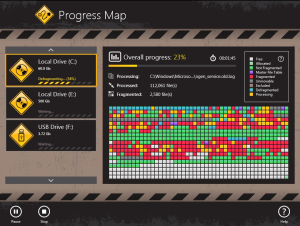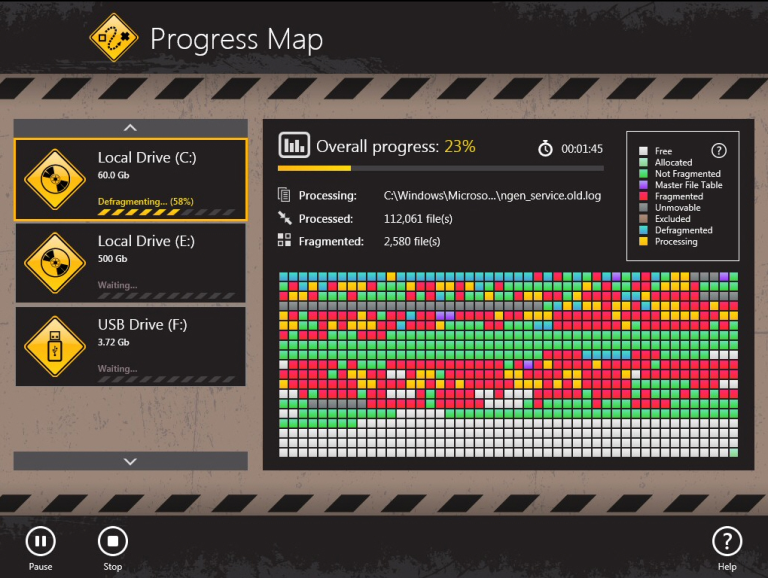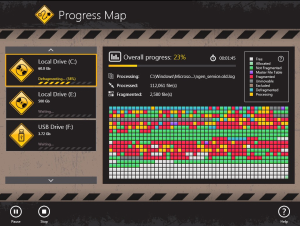Android 4.1 Jelly Bean marks a significant milestone in the evolution of Google’s mobile operating system, showcasing an array of improvements designed to enhance user experience. Announced as part of their press release, this Android update is set to launch mid-July, with developers already exploring its innovative features. Key enhancements like “Project Butter” provide smoother performance, ensuring that users enjoy a fluid experience at an impressive 60 frames per second. Additionally, Jelly Bean brings predictive text capabilities and an upgraded camera interface, solidifying its position as a frontrunner in mobile operating system updates. As users eagerly anticipate the Android 4.1 release, it is clear that Jelly Bean features are poised to elevate interactions on smartphones and tablets dramatically.
The latest iteration of Google’s operating system, often referred to as Jelly Bean, introduces a host of enhancements aimed at optimizing performance and usability. This revision, representing a pivotal update in the Android operating evolution, focuses not only on aesthetics but on practical improvements that enrich everyday functionality. Among these changes, users can expect an impressive refresh rate, advanced voice capabilities, and a more flexible home screen environment. These developments reflect Google’s commitment to refining its platform, demonstrating that even multi-layered mobile systems require periodic upgrades to stay ahead in the competitive technology landscape. As the July release approaches, the buzz around these changes and their implications for users is certainly palpable.
Understanding the Key Features of Android 4.1 Jelly Bean
Android 4.1 Jelly Bean marks a pivotal moment in Google’s mobile operating system evolution, focusing on performance enhancements rather than visual transformations. One of the most noteworthy features included in this update is ‘Project Butter,’ which ensures a more fluid user experience. This new rendering technique operates at an impressive 60 frames per second, eliminating stutter and lag that had been a pain point for users of previous Android versions. Furthermore, the ‘CPU Touch Responsiveness’ ensures that the device responds more proactively to touch inputs, providing a faster and more seamless interaction while using mobile applications.
Another significant addition to the Jelly Bean features is the self-correcting home screen arrangement. This intelligent adaptation allows widgets and app shortcuts to resize and reposition themselves automatically to optimally utilize screen real estate. With this functionality, Android 4.1 enhances user convenience by minimizing clutter and maximizing app accessibility, thereby improving the experience for mobile users. The predictive keyboard that anticipates the next word during typing showcases how Jelly Bean favors user efficiency, aligning with Google’s objective of refining user engagement through innovative functionalities.
The Impact of Android 4.1 Release on Mobile Operating System Updates
The release of Android 4.1 Jelly Bean is poised to impact the broader trends in mobile operating system updates significantly. By emphasizing under-the-hood improvements rather than mere aesthetic changes, Google challenges the conventional notion that every update must be visually impressive to attract user attention. Instead, updates like Jelly Bean focus on core functionality enhancements, setting a precedent that prioritizes performance and usability. As seen with features such as offline speech recognition and enhanced accessibility modes, Google is addressing user needs and bridging the gap in functionality that often exists in many current mobile operating systems.
In response to competitive advancements made by both Apple and Microsoft, the Jelly Bean update demonstrates how Google is continuously evolving its Android platform to maintain relevance. With improvements to features like Google Voice Search that now rivals the capabilities of Apple’s Siri, Google indicates a strong commitment to providing users with intelligent, context-aware experiences. As companies strive to differentiate their mobile platforms, the successful implementation of Android 4.1’s features will undoubtedly influence future updates from other operating systems, compelling them to prioritize performance-driven enhancements similarly.
Advanced User Experience Features in Jelly Bean
One of the standout features of Android 4.1 Jelly Bean is its newly revamped notification system, marking a significant evolution from earlier versions of Android. This actionable notification system allows the user to act directly from notifications, eliminating the need to constantly switch between applications. For example, users can now call directly from the notification area, a feature that streamlines communication and improves efficiency. By offering a richer preview for notifications, like complete Gmail views, Jelly Bean ensures users can manage their correspondence quickly and intuitively.
Additionally, the integration of NFC technology in Android Beam represents a massive leap in device interaction capabilities. This allows users to easily share information and connect with other devices simply by tapping them together. With advancements in gesture controls aiding visually impaired users, Jelly Bean caters to a diverse range of accessibility needs, reinforcing Google’s commitment to inclusivity. Each of these features contributes to an enhanced user experience that aligns with the evolving ways in which users interact with their devices.
Jelly Bean’s Contribution to Multilingual Support in Android
Android 4.1 Jelly Bean significantly expands its reach with improved multilingual support, a crucial enhancement for a global audience. The update introduces additional input languages including Arabic, Hebrew, Persian, Hindi, and Thai, broadening the scope of usability for non-English speakers. Moreover, the introduction of bi-directional text functionality allows for seamless typing in languages that read from right to left, making it much easier for users accustomed to such formats to navigate their devices confidently.
This commitment to supporting diverse languages reflects an understanding of the global mobile market’s linguistic variations, thus positioning Android as a more inclusive operating system. Furthermore, the advancement of features like the predictive keyboard, tailored to recognize and enhance input across these languages, demonstrates Google’s intent to ensure that all users benefit from the same levels of efficiency and ease of use. With these updates, Android reinforces its status as a leader in mobile operating systems, catering effectively to a multi-lingual user base.
Innovations in Accessibility with Android 4.1 Jelly Bean
Another remarkable area of improvement in Android 4.1 Jelly Bean is the enhancements made to accessibility features, particularly aimed at assisting visually impaired users. With the introduction of a gesture mode that combines touch inputs with voice feedback, Jelly Bean makes navigating the interface much more intuitive for users who rely on auditory cues. This innovative approach not only enhances the user experience for the visually impaired but also sets a new standard for accessibility considerations in mobile operating systems.
Moreover, features like the enhanced camera review mode allow all users, especially those with visual impairments, to engage more effectively with their devices. The ability to zoom out and swipe through photo previews mimics familiar navigation methods, making technology more approachable and manageable. These advancements indicate Google’s commitment to ensuring that all users, regardless of ability, can enjoy the benefits of modern smartphone technology, further solidifying Android’s reputation as a versatile operating system.
The Shift from Stock Browser to Google Chrome in Jelly Bean
With the roll-out of Android 4.1 Jelly Bean, Google made a significant decision by replacing the stock Android browser with Google Chrome. This transition is not merely a shift in branding; Chrome offers enhanced performance, improved security features, and a better interface that makes browsing faster and more enjoyable. By incorporating Chrome, Google also ensures that users have a seamless browsing experience that aligns with the capabilities expected from a modern mobile browser, thus keeping pace with competitors.
Additionally, the inclusion of Chrome supports features like synchronization between devices, allowing users to access their bookmarks and open tabs from any device. This cross-platform capability is increasingly critical in today’s digital landscape where users interact across multiple devices. The move to incorporate Google Chrome as the default browsing option in Jelly Bean signifies Google’s commitment to providing advanced web features, enabling smoother surfing experiences and reinforcing the dominance of its ecosystem in the mobile operating system arena.
Exploring Offline Features and Voice Recognition in Jelly Bean
One of the standout features of Android 4.1 Jelly Bean is the inclusion of offline speech recognition and voice typing, effectively increasing functionality for users with limited internet access. With this capability, users can still compose texts and commands even when they are not connected to Wi-Fi or mobile data. This offline functionality is particularly beneficial for users in regions with unreliable internet connectivity, showcasing Google’s commitment to making its technology accessible to a broader audience.
Moreover, the upgrade to Google Voice Search, which now employs more sophisticated question and answer capabilities, enhances user engagement. By allowing users to interact with their devices in a conversational manner, Google is paving the way for a more natural interaction style that mimics human conversation. This shift not only aligns with user expectations for intuitive device management but also stands as a competitive edge against other mobile operating systems that may not yet offer such advanced voice recognition features.
The Future of Android Updates Beyond Jelly Bean
Looking ahead, the release of Android 4.1 Jelly Bean sets a strong foundation for future updates to the Android ecosystem. With the focus on performance enhancements and feature integration that addresses real user needs, Google is paving the way for a more robust operating system. As developers and manufacturers adapt to Jelly Bean’s innovations, we can expect a ripple effect that influences future versions of Android, centering on improved usability and functionality.
Moreover, the trends established by Jelly Bean will likely inspire subsequent updates from competing mobile operating systems. With increased emphasis on accessibility, multilingual support, and actionable notifications, Android’s improvements may lead to a more standardized expectation of features across the board in future mobile operating systems. This evolution signals a promising future where user experience and technological advancement go hand-in-hand.
Frequently Asked Questions
What new features are included in the Android 4.1 Jelly Bean update?
The Android 4.1 Jelly Bean update introduces several exciting features, including Project Butter for smoother performance at 60 frames per second, a self-correcting home screen for dynamic widget arrangements, a predictive keyboard for improved typing accuracy, offline speech recognition, and support for more input languages. Additionally, the Jelly Bean Camera app offers a new filmstrip view, and the notification system has been enhanced for more interactive experiences.
How does the Android 4.1 Jelly Bean improve the user experience?
Android 4.1 Jelly Bean significantly enhances the user experience through performance upgrades like Project Butter, which ensures smooth transitions and increased responsiveness. The updated notification system allows direct interactions with notifications, while features such as the predictive keyboard and offline voice typing streamline communication, making it easier and faster for users to operate the mobile operating system.
What is Project Butter in Android 4.1 Jelly Bean?
Project Butter, a key feature of Android 4.1 Jelly Bean, focuses on improving the overall performance of the mobile operating system. It achieves this by optimizing the rendering process, resulting in a smoother user interface that runs at 60 frames per second. The enhancement includes increased CPU responsiveness, especially when the touchscreen is used, offering a more fluid and efficient experience.
When was the Android 4.1 Jelly Bean release date?
Android 4.1 Jelly Bean was officially released to consumers in mid-July, following its introduction during Google’s developer preview. This update brought numerous improvements and new features to the Android mobile operating system.
What improvements does Android 4.1 offer for visually impaired users?
Android 4.1 Jelly Bean introduces enhanced gesture mode specifically designed for visually impaired users. This feature combines touch and voice interactions to provide a more accessible navigation experience within the mobile operating system.
How does the notification system change in Android 4.1 Jelly Bean?
The Android 4.1 Jelly Bean update brings a more actionable notification system that allows users to interact directly with notifications without needing to open the corresponding app. This improvement makes managing calls, emails, and social media updates much more efficient within the Android mobile operating system.
What is the significance of Google Chrome in Android 4.1 Jelly Bean?
In Android 4.1 Jelly Bean, the stock Android browser has been replaced with Google Chrome, marking a significant improvement in browsing speed and features. This integration enhances the mobile browsing experience, aligning it with the advancements in other Google applications.
Can I expect performance improvements with the Android 4.1 Jelly Bean update?
Yes, users can expect noticeable performance improvements with the Android 4.1 Jelly Bean update due to enhancements like Project Butter and increased CPU responsiveness during touch interactions. These changes collectively enhance the performance of apps and the overall mobile operating system experience.
Does Android 4.1 Jelly Bean support additional languages?
Yes, Android 4.1 Jelly Bean expands its language support by adding languages such as Arabic, Hebrew, Persian, Hindi, and Thai. It also introduces bi-directional text support, making the mobile operating system more accessible to a diverse user base.
What role does NFC play in the Android 4.1 Jelly Bean update?
NFC technology plays a vital role in the Android 4.1 Jelly Bean update through the Android Beam feature, which facilitates quick and easy information transfer between devices. This feature allows users to share content seamlessly via NFC and Bluetooth, enhancing the overall usability of the mobile operating system.
| Feature | Description |
|---|---|
| Project Butter | Enhances rendering and operation, ensuring smooth 60 FPS performance. |
| Self-Correcting Home Screen | Widgets and app shortcuts intelligently resize and rearrange to fit available space. |
| Predictive Keyboard | Forecasts next words based on message context for faster typing. |
| Offline Speech Recognition | Allows voice typing and recognition without needing an internet connection. |
| Additional Input Language Support | Includes Arabic, Hebrew, Persian, Hindi, and Thai, with bi-directional text support. |
| Enhanced Gesture Mode | Improves navigation for visually impaired users by combining touch and voice controls. |
| New Camera Review Mode | Introduces a filmstrip view for quick photo review and deletion. |
| Android Beam | Facilitates NFC inter-device communication and Bluetooth information transfer. |
| Google Chrome Integration | Replaces stock Android browser with Google Chrome for improved browsing. |
| Improved Notifications | Allows direct interactions from notifications, improving user efficiency. |
| Upgraded Google Voice Search | Introduces question and answer capabilities, similar to Siri. |
| Multicast DNS Discovery | Enables applications to connect to peer devices on Wi-Fi networks. |
Summary
Android 4.1 Jelly Bean marks a significant evolution in mobile operating systems, focusing primarily on enhancing performance rather than introducing flashy new features. This update, set to launch in mid-July, incorporates several improvements, such as Project Butter for smoother user interaction, a predictive keyboard for faster typing, and advanced notification systems allowing users to manage tasks more efficiently. With these upgrades, Android 4.1 Jelly Bean not only delivers a more responsive and refined user experience but also supports a wider array of languages and accessibility options, ensuring that it caters to a diverse audience.









